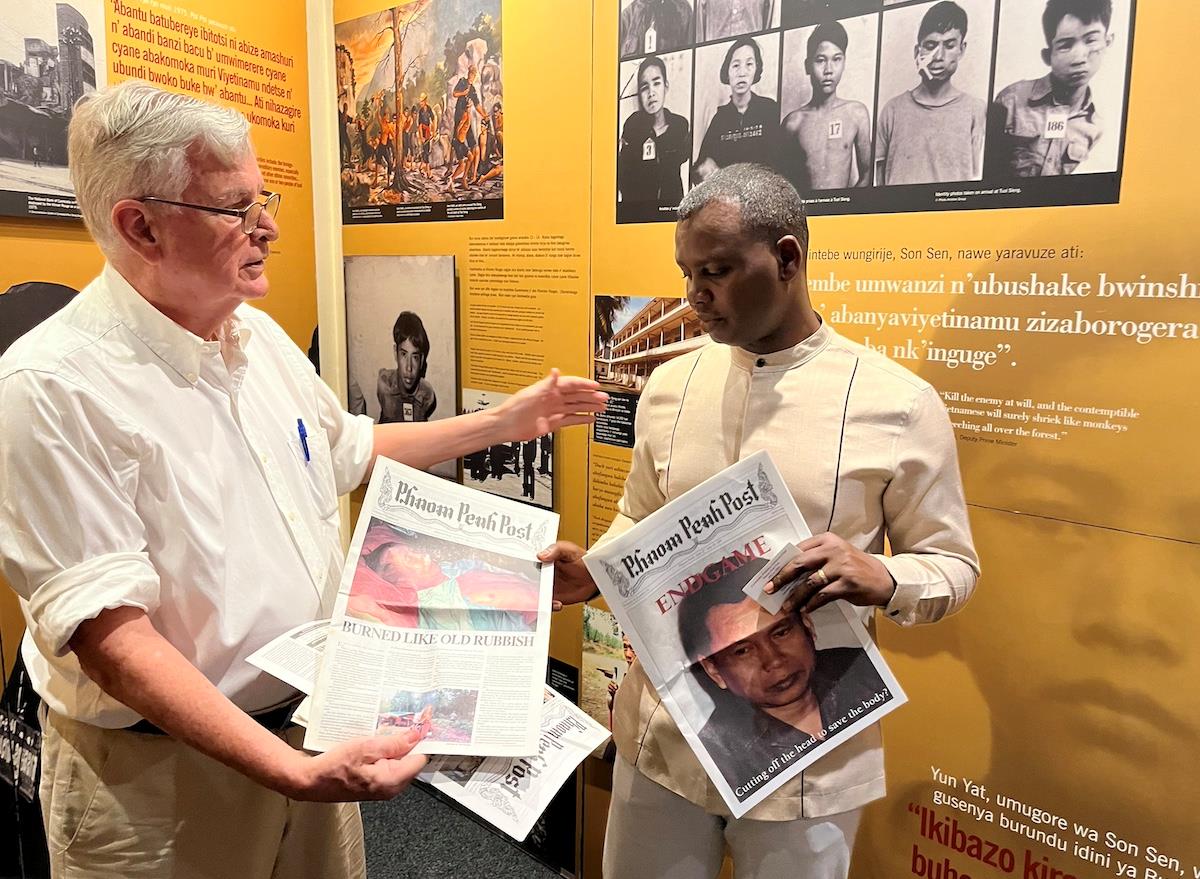Latest stories

Toward a China-checking Asian NATO

Yen hits 34-year low, defying end of negative rates

Countering China's rare earth dominance and coercion Hundreds of thousands of Rwandans also“remember” April as a cruel month. On April 7, 1994, Hutu extremists began a well-planned and systematic slaughter of ethnic Tutsis that over the next 100 days would see more than 800,000 killed.
A friend of mine in Kigali who witnessed the genocide still remembers seeing piles of hacked-up bodies two meters high along many highways. He still has nightmares thinking about it.
It was only the intervention from Uganda by the Rwandan Patriotic Forces that ended the slaughter, pushing Hutu Genocidiares into the Democratic Republic of the Congo, where some still operate.
Rwanda, like Cambodia, has struggled for decades to recover from these horrors. The process has not been easy for either nation.
The Kigali Genocide Memorial (KGM), opened in 2004, is one effort that seeks through education and peace-building to honor 250,000 victims buried there. Mass gravesites of those murdered are still being discovered around the country.
The KGM cost about US$2 million to build, according to CEO Freddy Mutanguha. The Aegis Trust in the UK provided major funding. Other donors included the Belgian and Swedish governments, the Kigali City Council and the Clinton Wasserman Foundation.
The KGM receives about 120,000 visitors a year, operates with an annual budget of US$1 million, and has a serious outreach program. Entrance is free for all visitors.
“The education we provide gives strength to hearts,” said Mutanguha.“And we teach people not to be bystanders when they see injustice.”
Mutanguha believes violence can be prevented.“By identifying the increasing signs to violence, we can prevent the path from getting worse,” he says.

Author donates Phnom Penh Post “Pol Pot Dead” issues from 1998 to KGM CEO Freddy Mutanguha. Image: Supplied by Michael HayesThe KGM and its education programs also have a heavy emphasis on the negative effects of hate speech – a key factor in the Rwandan genocide.
Youk Chhang, director of the Documentation Center-Cambodia (DC-CAM), based in Phnom Penh, helped the KGM put together its Cambodian Remembrance Corner.
The separate, four-walled room includes photos of Khmer Rouge victims and leaders, panels with text describing what happened, and information on the Khmer Rouge's major torture and execution center at Tuol Sleng, where around 14,000 people met a cruel fate.
Chhang has plans for a museum in Phnom Penh, a comprehensive entity called the Sleuk Rith Institute. He even managed to convince the famous architect Zaha Hadid to donate a design for the institute. However, progress on securing land for the site and funding has been negligible.
Many Cambodians think the Khmer Rouge genocide should be forgotten, that it should be consigned to history books few people read.
Sixty-five percent of Cambodia's 15 million population are under the age of 35 and have no direct memories of those horrific events so many years ago. Many survivors don't want to talk about it.

Sign up for one of our free newsletters The Daily ReportStart your day right with Asia Times' top stories AT Weekly ReportA weekly roundup of Asia Times' most-read stories
Others disagree. Michael Karnavas, a defense lawyer at the Khmer Rouge Tribunal made the point succinctly in a recent blog post:
We've all heard George Santayana's quote so often it has almost become trite:“Those who cannot remember the past are condemned to repeat it.”
There are more than a few well-meaning folks in Cambodia who want to make sure Khmers and others never forget how the Khmer Rouge almost completely destroyed an entire culture. They need help to do so. Rwanda, for its part in a small way, is doing just that.
Michael Hayes is founder and former editor-in-chief of the Phnom Penh Post
Already have an account?Sign in Sign up here to comment on Asia Times stories Thank you for registering!
An account was already registered with this email. Please check your inbox for an authentication link.